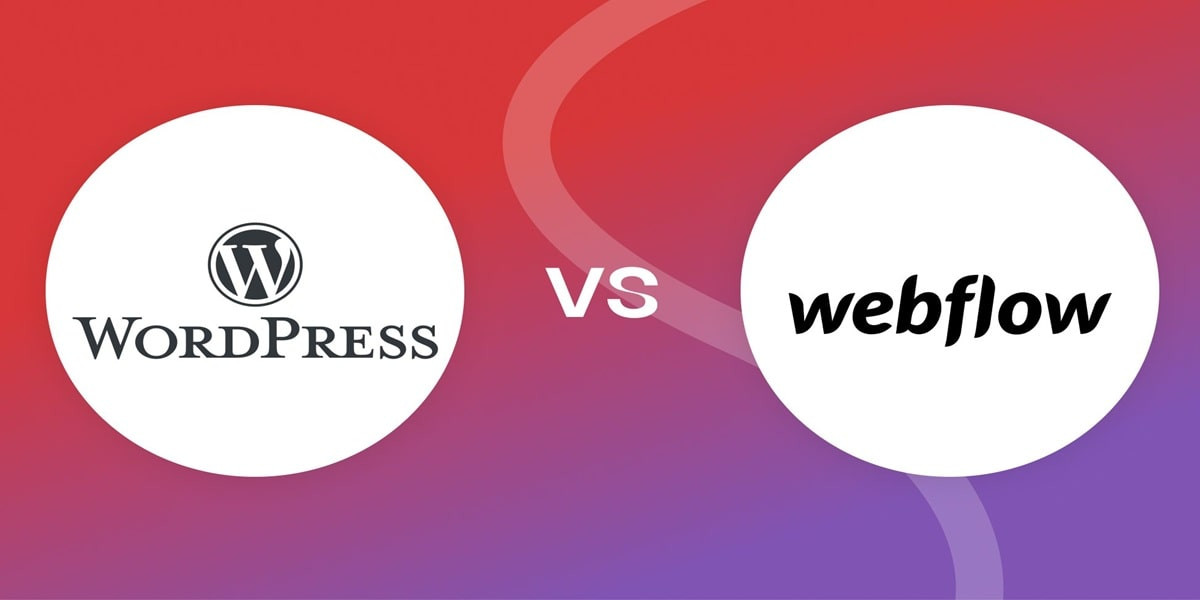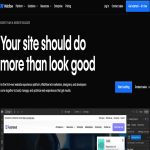In today’s digital world, the success of any online business largely depends on its website’s ability to rank well in search engine results. A well-optimized website can drive organic traffic, attract potential customers, and ultimately generate higher conversion rates. As more businesses look for the easiest, most efficient ways to build websites, both Webflow and WordPress have emerged as dominant players in the content management system (CMS) market. While both platforms have their strengths, it’s important to assess their SEO capabilities and decide which one aligns best with your website goals.
This in-depth comparison will explore the SEO features, advantages, challenges, and general usability of Webflow and WordPress, so you can make a well-informed decision about which platform suits your website’s needs and long-term SEO strategy.
Understanding SEO and Its Importance in Website Building
Before diving into the specifics of Webflow vs WordPress, it's essential to understand why SEO (Search Engine Optimization) matters. SEO involves optimizing your website to increase its visibility on search engines like Google. When your website ranks higher in search results, it attracts more organic traffic, leading to greater brand awareness, more leads, and higher conversions.
Effective SEO strategies include the use of relevant keywords, quality content, technical optimizations (like page speed and mobile optimization), and ensuring your website is crawlable and indexable by search engine bots. These factors determine how well your website will perform in search engine rankings and how likely your content will be discovered by your target audience.
SEO Benefits of Webflow
1. Website Performance and Speed
When it comes to SEO, website performance is a crucial factor. Websites that load quickly tend to rank higher in search engine results pages (SERPs). Webflow is designed with performance optimization in mind. It generates clean and efficient code, which allows pages to load faster. Speed is a key ranking factor for Google, and Webflow’s streamlined code ensures that your website is highly responsive and offers a smooth user experience.
Unlike WordPress, where many websites rely on plugins and additional scripts, Webflow’s clean code helps minimize the risk of bloated or inefficient code that can slow down your site. This results in faster page load times, which can significantly enhance the user experience and improve your SEO performance.
2. Mobile Optimization and Responsiveness
In today’s mobile-first world, search engines like Google prioritize mobile-friendly websites in their rankings. Webflow’s built-in responsive design ensures that your website automatically adjusts to different screen sizes, from desktop computers to smartphones. This mobile optimization is critical, as a large percentage of online users access websites via mobile devices.
With Webflow, you can easily preview how your website will look on different devices and adjust the layout accordingly. This seamless responsiveness means your website will not only look great on any device but also offer a better user experience, which Google rewards with higher rankings.
3. SEO-Friendly Code and Structure
Webflow’s approach to generating SEO-friendly code is one of its standout features. Clean, well-structured HTML and CSS make it easier for search engine bots to crawl and index your website. In contrast, WordPress websites often rely on plugins and additional tools that can introduce unnecessary code or create compatibility issues, potentially hindering a site’s SEO performance.
With Webflow, you have full control over meta tags, alt text for images, heading tags, and URLs, making it easier to customize your website’s structure in a way that is both SEO-optimized and user-friendly. Search engine bots can quickly understand your content, leading to improved visibility in search engine results.
4. Customizable URLs
URL structures play an important role in SEO. Descriptive, keyword-rich URLs can help improve your site’s relevance and ranking for specific keywords. Webflow offers the ability to customize URL slugs, which gives you full control over how your URLs are structured. This flexibility ensures you can optimize each page URL for SEO and improve your website’s chances of ranking higher.
Considerations for Not Using Webflow
While Webflow provides many SEO benefits, it may not be the best fit for every project. One potential downside is its learning curve. For those who are familiar with WordPress, transitioning to Webflow may require time to get used to the platform, as it differs significantly from the WordPress interface.
Additionally, Webflow may not be the best option for complex websites that require advanced e-commerce functionality or highly specialized features. WordPress, with its vast selection of plugins, offers more flexibility in terms of functionality, making it a better choice for large-scale websites or online stores that need extensive features.
Why Consider Migrating from WordPress to Webflow?
1. Improved Speed and Performance
A common challenge with WordPress is the site speed. As websites grow, they tend to become slower due to the large number of plugins and the use of third-party tools. Webflow offers faster load times out of the box due to its lightweight code and optimized backend infrastructure. This improved speed is not only beneficial for user experience but also contributes significantly to better search engine rankings.
2. Simplified Website Management
Managing a WordPress website often involves dealing with multiple plugins for different functionalities. While plugins can enhance your website’s features, they also pose risks such as compatibility issues, security vulnerabilities, and regular maintenance. Webflow, however, reduces this dependency on plugins by providing most of the features natively, which means you can enjoy a more secure, stable, and SEO-friendly website.
3. Security and Stability
Another factor that makes Webflow an attractive choice is its security. WordPress websites are more susceptible to security breaches due to its reliance on plugins and themes. Hackers often target WordPress websites because of outdated plugins or themes. With Webflow, you don’t have to worry about this, as the platform takes care of security updates and patches, reducing the risk of vulnerabilities.
The Professional Side of Webflow
Webflow is increasingly popular among professional designers, developers, and businesses. Many well-known companies have chosen Webflow for their websites because of its flexibility, SEO optimization, and creative freedom. The platform is particularly favored by professionals because it allows designers to create stunning, fully customized websites without being limited by pre-made templates.
In addition to its design capabilities, Webflow’s built-in SEO tools make it easy to ensure your website is optimized for search engines, even for those who aren’t SEO experts. The ability to design and develop websites without a reliance on developers or external tools is a significant advantage for businesses looking to streamline their website-building process.
SEO Benefits of WordPress
WordPress is still one of the most widely used platforms for website creation, and for good reason. Here are a few SEO benefits of WordPress:
1. Extensive Plugin Library
One of the main advantages of using WordPress is its extensive plugin library, which can be a powerful tool for improving your website’s SEO. Plugins like Yoast SEO or Rank Math provide advanced SEO features, such as on-page optimization, meta tag management, keyword analysis, and more. These plugins can help you implement SEO best practices, making it easier for beginners to manage their SEO efforts.
2. Content Management
WordPress is known for its user-friendly content management system (CMS), which is easy for non-technical users to navigate. The platform’s intuitive interface allows users to quickly add and edit content, which is crucial for maintaining an SEO-friendly website. Fresh, high-quality content is one of the key ranking factors for search engines, and WordPress’s CMS makes it easy to update your website regularly with new blog posts or articles.
3. Flexibility and Customization
WordPress provides unmatched flexibility in terms of customization. Whether you need a simple blog, a complex e-commerce website, or a full-featured membership site, WordPress offers a wide variety of themes and plugins that can help you build the exact site you need. This flexibility makes WordPress a versatile option for businesses of all sizes and industries.
Considerations for WordPress
While WordPress offers great flexibility and powerful SEO tools, it also has its limitations:
-
Performance Issues: WordPress websites can become slow if you use too many plugins or fail to optimize your website’s performance.
-
Security Risks: The reliance on plugins can introduce security vulnerabilities, especially if they aren’t regularly updated.
-
Maintenance: WordPress requires ongoing maintenance, such as updating plugins and themes, to keep your website secure and functioning properly.
Conclusion
Both Webflow and WordPress offer unique advantages for building SEO-friendly websites, but they differ significantly in terms of design flexibility, ease of use, and performance.
If you prioritize website speed, mobile optimization, and a clean, SEO-friendly code, Webflow may be the better choice. It’s ideal for creative freedom and professional website design, and its built-in SEO features offer great value for businesses looking for streamlined performance.
However, if you need a platform with extensive plugins, a wide selection of themes, and advanced customization options, WordPress is a solid choice, especially if you are looking to build a highly complex website or an e-commerce store.
Ultimately, the best CMS for your website depends on your specific needs, SEO goals, and the complexity of your site. Regardless of which platform you choose, it’s




